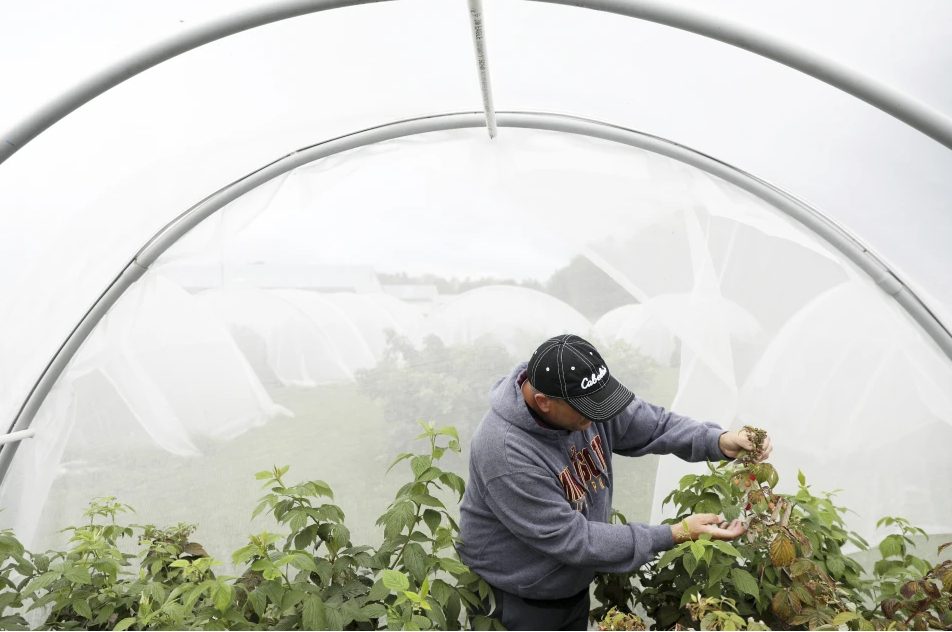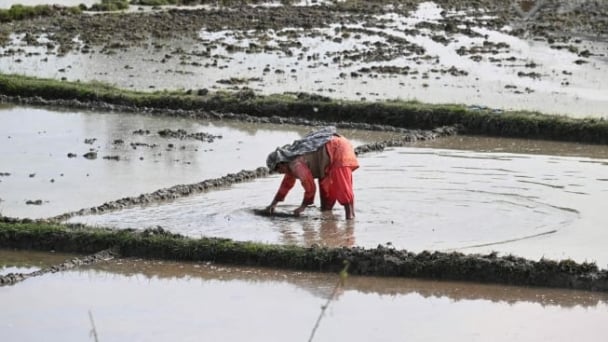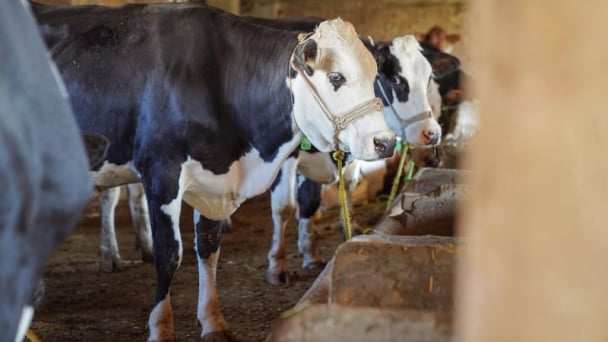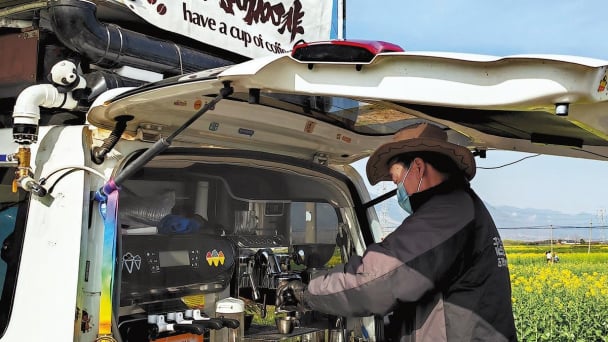May 16, 2025 | 10:14 GMT +7
May 16, 2025 | 10:14 GMT +7
Hotline: 0913.378.918
May 16, 2025 | 10:14 GMT +7
Hotline: 0913.378.918

Entomology researcher Eric Burkness checked raspberry plants growing in a hoop house for signs of spotted wing drosophila Tuesday, Sept. 26, 2017, in Rosemont, Minn. New research from North Carolina State University offers some hope to fruit growers who have struggled with a damaging fruit fly and describes how the researchers manipulated the insects’ DNA so that female offspring would be sterile. Photo: Anthony Souffle
Paul Nelson is used to doing battle with an invasive fruit fly called the spotted wing drosophila, a pest that one year ruined more than half the berries on the Minnesota farm he and his team run. In recent years, they’ve cut their losses closer to 5%, but it’s been labor-intensive and expensive.
“It’s a pest that if you’re not willing to stick the time into it, it’s going to take over your farm,” said Nelson, the head grower at Untiedt’s, a vegetable and fruit operation about an hour west of Minneapolis.
Nelson and other growers may someday get a new tool as a result of research at North Carolina State University into the insects, which ruin the berries by laying their eggs in them and have been estimated to cost growers hundreds of millions of dollars annually. The researchers, using a concept called “gene drive,” manipulated the insects’ DNA so that the female offspring would be sterile, and the method they used to achieve it significantly reduced the chance that a population could rebound.
The researchers, whose work was published Monday in the Proceedings of the National Academy of Sciences, found if they bred one of their modified flies with a non-modified fly, up to 99% of the offspring would inherit the sterility trait. They used mathematical modeling to show that if they released one modified fruit fly for every four that were not and did that every two weeks, they could collapse a population in about five months.
Genetically modifying insects as a form of pest control isn’t a new idea. Scientists have already released genetically modified mosquitoes, for instance, which mate with the native population to produce offspring that die before adulthood to hold down populations and help combat the spread of insect-borne diseases like yellow fever, dengue and Zika viruses. But the technology hasn’t taken off as widely in agriculture because pesticides have been cheaper and easier to deploy.
Max Scott, a professor of entomology and a co-author of the paper, said some methods of releasing genetically modified insects to curb populations would become expensive if applied on a large scale because it has to be done over and over again before pests are wiped out. But he said his team’s method, which hinges on an idea called “gene drive,” more quickly facilitates the spread of sterility throughout successive generations, and that could mean fewer times the modified bugs need to be released.
“We’re really excited about this,” Scott said. “The system is working really efficiently.”
If the researchers’ genetic process works in the field, it could be an important addition to farmers’ arsenal of pest management techniques against a persistent bug that can wipe out 20-30% of a raspberry yield even after pesticide use, said Bill Hutchison, a professor and extension entomologist with the University of Minnesota. And the fight against pests has been growing with climate change, he added, as warmer winters are allowing invasive species like the spotted wing drosophila to better survive the winter and extend their range for overwintering north.
At Untiedt’s, Nelson said he’s noticed warmer winters and earlier springs. He’s still waiting to see this year’s first fruit flies, but they’ve been coming earlier each year to the farm’s roughly 35 acres of strawberries, raspberries and tomatoes, he said.
“For years they kept telling us you’ll never see (spotted wing drosophila) in your June-bearing strawberries because they’re done too early. That’s not true. We’ve found them in our June-bearing strawberries,” he said.
To combat the pests, Nelson and his team have used pesticides and traps and spend significant time looking for the tiny bugs. Hutchison said some farmers use ventilated netting or plastic that effectively creates a type of greenhouse over their fruits. But all those methods have drawbacks. Pesticides can kill beneficial insects, and spraying can require farmers who let people pick their own berries halt operations for a few days. Netting can be tough to set up, and plastic coverings can overheat crops.
Luciano Matzkin, an associate professor of entomology at the University of Arizona, studies drosophila and other pest species with an eye toward agriculture. Matzkin, who was not part of the study, said Scott’s team’s focus on stopping the pest by sterilizing females solved a problem that sometimes occurs with gene drive technology — that a lucky gene mutation can arise and get passed down, resisting what scientists were hoping to achieve.
Lyric Bartholomay, a professor in the School of Veterinary Medicine at the University of Wisconsin-Madison who studies integrated pest management and public health entomology who was not part of the study, said “increasingly tailored genetic approaches” will be necessary in the future to protect crops and people from pests, especially as insecticide resistance increases.
The research is years away from practical application. Scott and his team are moving on to more lab trials to see if their mathematical modeling is correct, and would then go through a regulatory process before moving to field trials. More research will also be needed to take into account considerations like regional genetic variation within the same species and the ecological impact of interactions with other species, something both Scott and Matzkin highlighted.
Matzkin said if there are no negative environmental risks, “a successful bio-control approach is always preferable” to pesticides, which have significant environmental consequences and costs of their own. That’s why, he says, entomology departments across the country are studying the biology and ecology of the insects at the same time that other researchers work on transgenic approaches to population control in a wide array of pests.
In the meantime, Nelson will wait to see whether new solutions arise to help him manage pests. He farms with his 24-year-old son and says he’s concerned about the future.
“The experts are all going to tell us what’s going on. But as we farm, we look at it, how is this going to change things for the next generation?” he asked. “If we lose our sales on our crops of berries, that’s a very large deal for our farm.”
(AP)

(VAN) Fourth most important food crop in peril as Latin America and Caribbean suffer from slow-onset climate disaster.

(VAN) Shifting market dynamics and the noise around new legislation has propelled Trouw Nutrition’s research around early life nutrition in poultry. Today, it continues to be a key area of research.

(VAN) India is concerned about its food security and the livelihoods of its farmers if more US food imports are allowed.

(VAN) FAO's Director-General emphasises the need to work together to transform agrifood systems.

(VAN) Europe is facing its worst outbreak of foot-and-mouth since the start of the century.

(VAN) The central authorities, in early April, released a 10-year plan for rural vitalization.

(VAN) Viterra marked a significant milestone in its carbon measurement program in Argentina, called Ígaris, reaching 1 million soybean hectares measured.